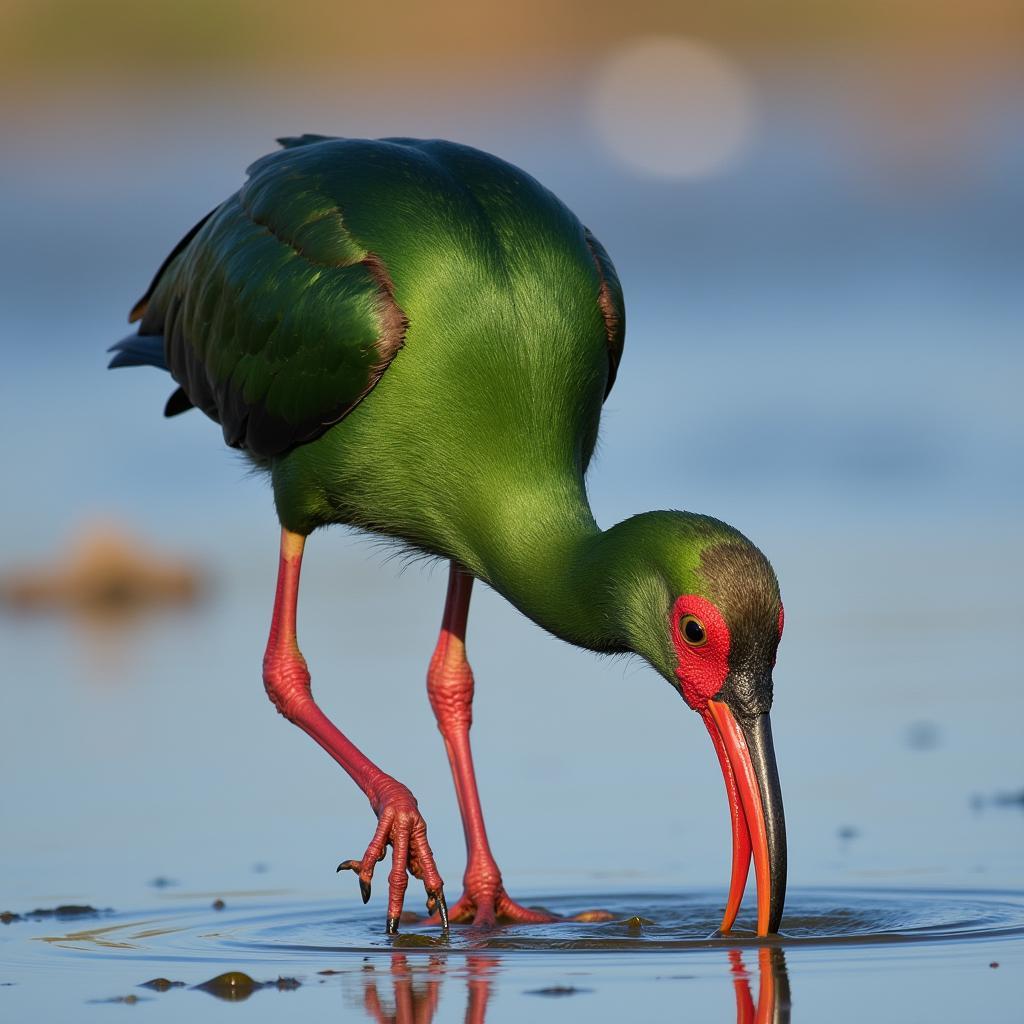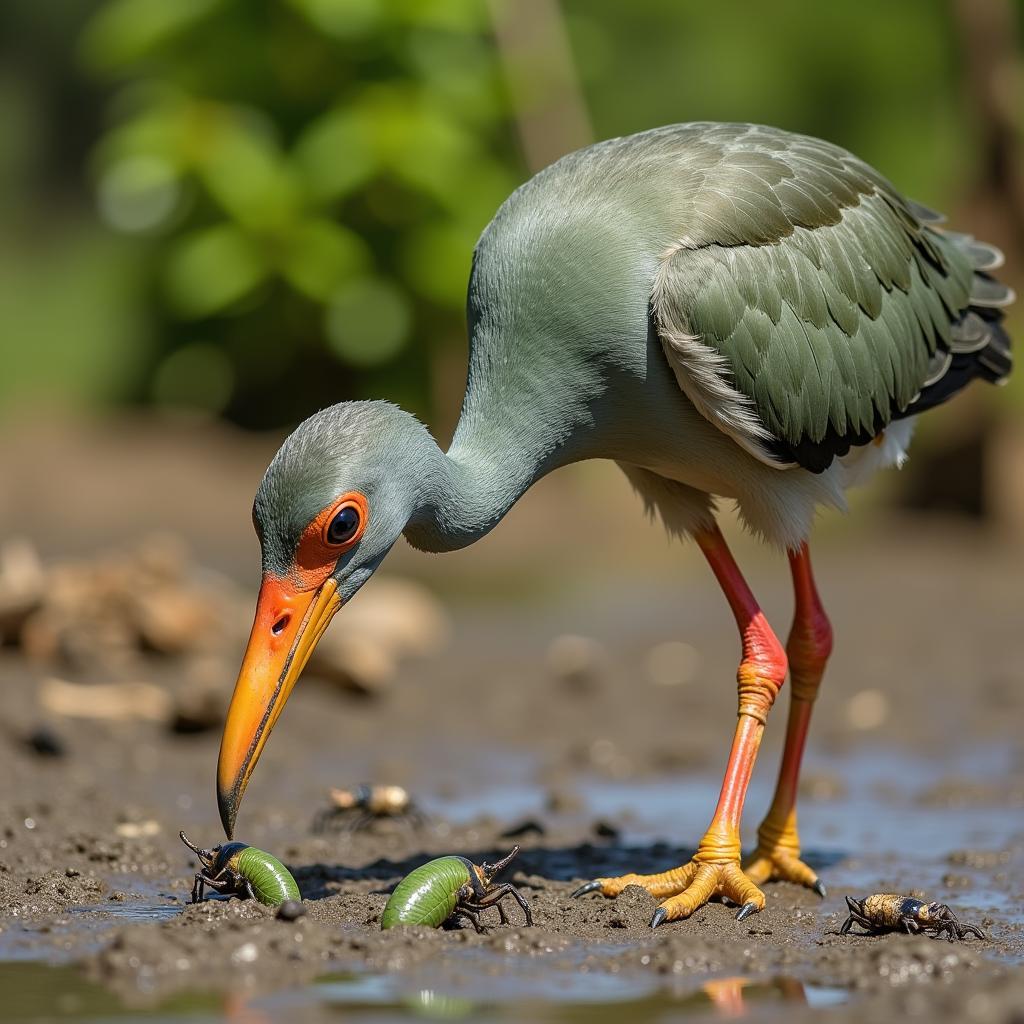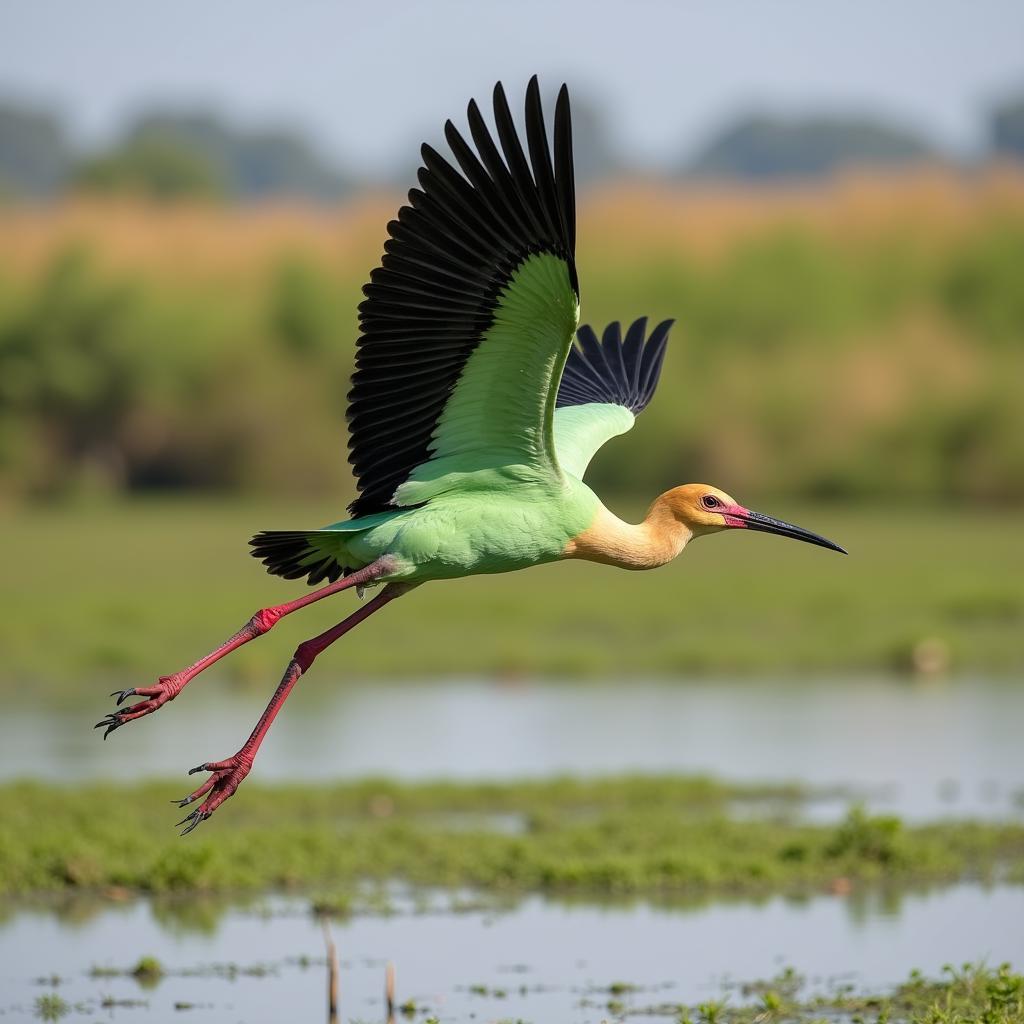The African Green Ibis: A Guide to this Striking Wetland Bird
The African Green Ibis, scientifically known as Bostrychia hagedash, is a common sight in sub-Saharan Africa. Often found foraging in wetlands, grasslands, and even urban parks, this striking bird is a favorite among birdwatchers and nature enthusiasts. With its vibrant plumage, distinctive call, and fascinating behaviors, the African green ibis offers a unique glimpse into the continent’s rich biodiversity.
Appearance and Identification: A Symphony of Green and Red
The African green ibis is easily recognizable by its striking appearance.
- Vibrant Plumage: Its body is adorned with iridescent green feathers that shimmer in the sunlight. These feathers can appear bronze or purplish depending on the angle of the light.
- Distinctive Markings: A patch of bright red skin on its face, just behind its long, curved beak, further adds to its striking appearance.
- Long Legs and Bill: The ibis possesses long, dark legs perfectly adapted for wading through shallow water, and a curved beak ideal for probing for food in mud and vegetation.
 African Green Ibis Foraging in Wetland
African Green Ibis Foraging in Wetland
While the adult African green ibis displays these vibrant colors, juveniles have a duller, browner plumage, lacking the distinctive red facial patch.
Habitat and Distribution: Thriving in Diverse Environments
The African green ibis exhibits a remarkable adaptability when it comes to habitat. They are found throughout sub-Saharan Africa, thriving in a variety of environments:
- Wetlands: Swamps, marshes, and riverbanks are their preferred habitats, offering an abundance of food sources.
- Grasslands: These birds are often seen foraging in open grasslands, particularly in areas with short grass where they can easily spot insects and other prey.
- Urban Parks and Gardens: The African green ibis has shown a remarkable ability to adapt to urban environments and can be found in parks, gardens, and even golf courses where water and food are readily available.
Diet and Feeding: Opportunistic Foragers of the Wetlands
As opportunistic feeders, African green ibises have a diverse diet:
- Insects: They primarily feed on insects, using their long, curved beaks to extract them from mud, shallow water, and vegetation.
- Amphibians and Reptiles: Small frogs, tadpoles, and lizards also form part of their diet.
- Aquatic Invertebrates: Crustaceans, worms, and snails found in wetlands are also consumed.
 African Green Ibis Feeding Technique
African Green Ibis Feeding Technique
Their feeding behavior is characterized by slow, deliberate movements as they wade through shallow water, probing their beaks into the mud and under rocks in search of a meal.
Social Behavior and Calls: A Chorus of “Ha-ha-ha-de-dah”
While African green ibises can be solitary foragers, they are often found in small groups:
- Flocks: They gather in flocks, particularly at roosting sites and around abundant food sources.
- Breeding Season: During the breeding season, pairs establish territories and engage in elaborate courtship displays.
- Distinctive Calls: Their loud, echoing “ha-ha-ha-de-dah” call is a familiar sound in their habitat, often used for communication within flocks and during territorial disputes.
Their calls are most frequent at dawn and dusk, creating a characteristic chorus that echoes across the African landscape.
Conservation Status: A Species of Least Concern
Fortunately, the African green ibis is currently classified as a species of Least Concern by the International Union for Conservation of Nature (IUCN).
- Stable Population: Their populations remain relatively stable across their wide range.
- Adaptability: Their ability to adapt to human-modified environments has contributed to their success.
- Conservation Efforts: However, habitat loss due to wetland drainage and agricultural expansion remains a potential threat. Continued conservation efforts are essential to ensure the long-term survival of this iconic African bird.
The African Green Ibis: A Symbol of Resilience and Adaptation
The African green ibis, with its vibrant plumage, distinctive call, and fascinating behaviors, is a captivating ambassador for the biodiversity of the African wetlands. Their ability to thrive in a variety of habitats, including human-modified landscapes, is a testament to their resilience and adaptability. By learning about and appreciating these unique birds, we can contribute to their conservation and ensure that the “ha-ha-ha-de-dah” call continues to echo across Africa for generations to come.
 African Green Ibis Soaring Above Wetlands
African Green Ibis Soaring Above Wetlands
FAQs:
What is the average lifespan of an African green ibis?
While precise data is limited, they are believed to live for an average of 10-15 years in the wild.
Do African green ibises migrate?
They are generally non-migratory birds, but local movements may occur in response to changes in food and water availability.
Are African green ibises considered social birds?
Yes, they are often observed in flocks, particularly outside of the breeding season.
Need More Information?
- Explore the beauty of African botanical gardens and discover the diverse flora that supports birdlife.
- Learn about the intricate art of African bird masks and their cultural significance.
For further assistance and inquiries, please contact:
Phone: +255768904061
Email: kaka.mag@gmail.com
Address: Mbarali DC Mawindi, Kangaga, Tanzania.
Our dedicated customer support team is available 24/7 to assist you.

